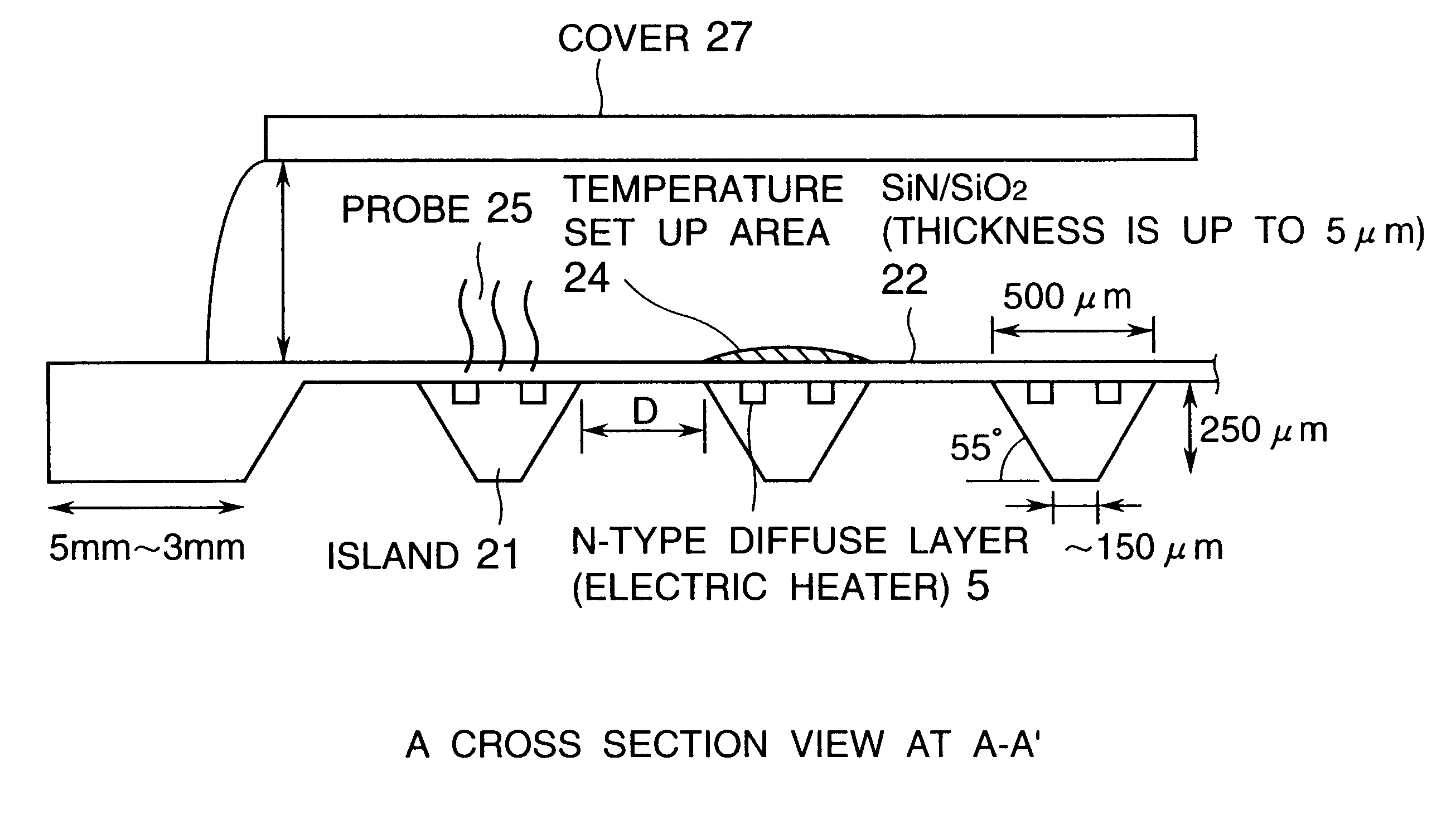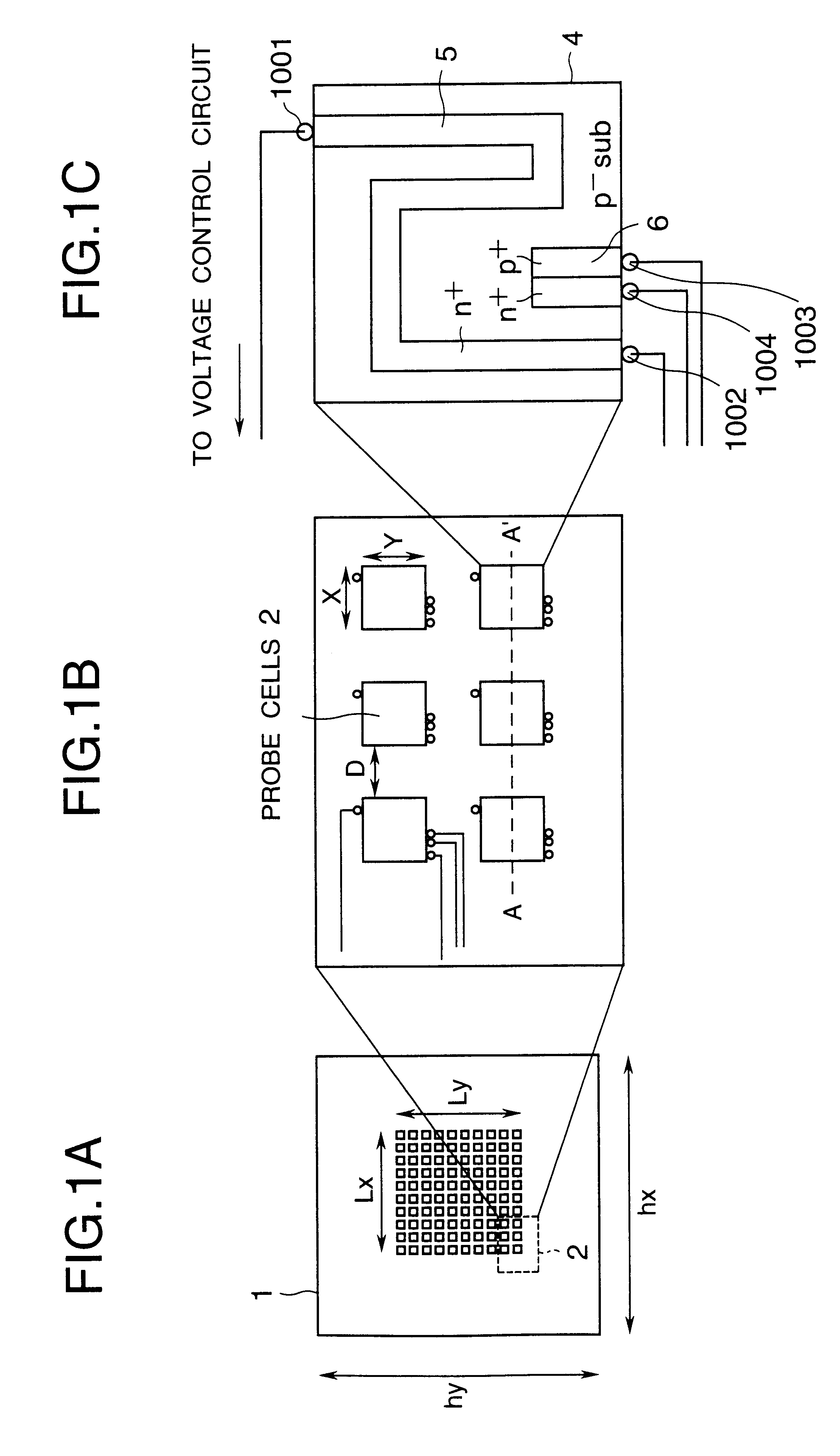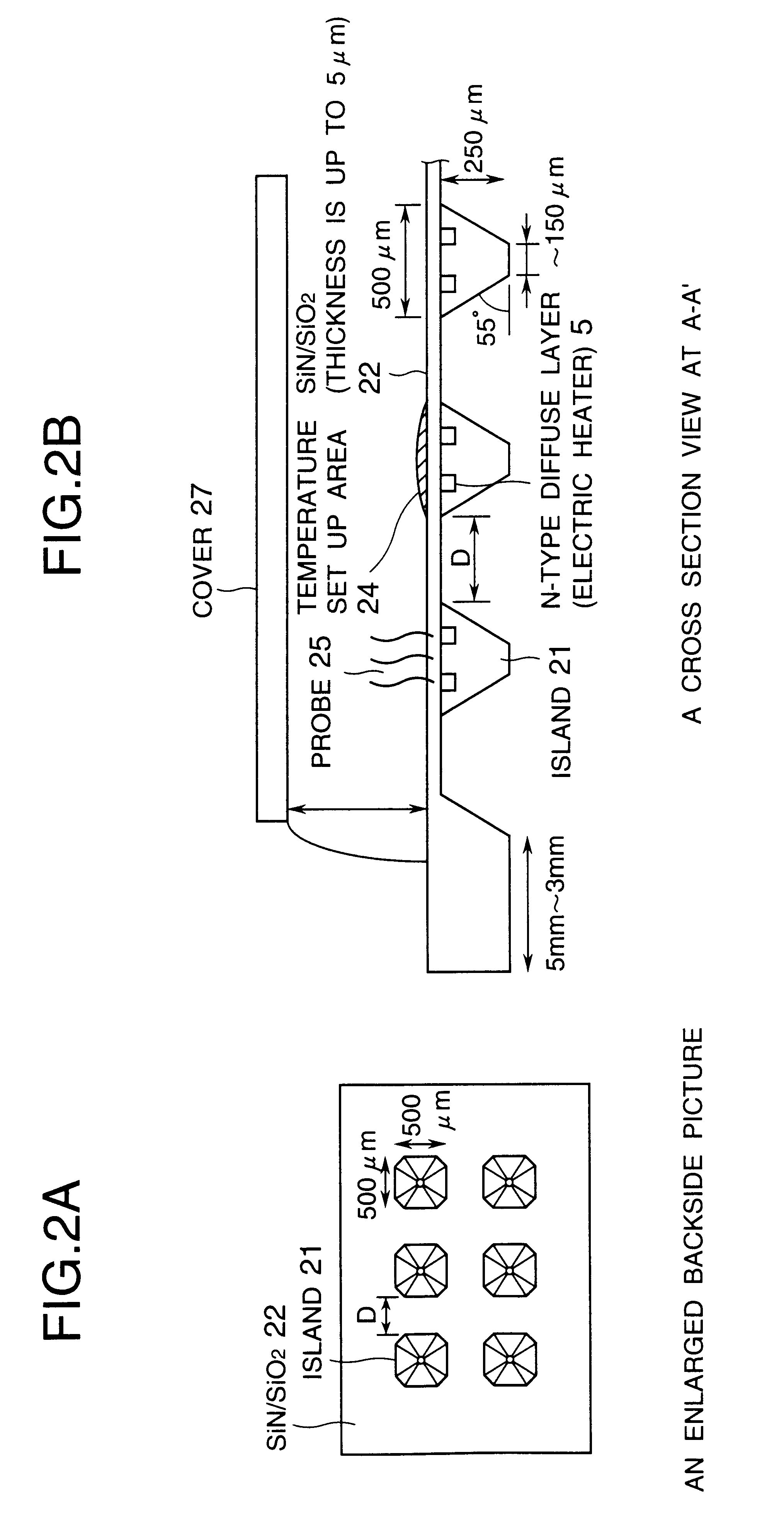Advanced thermal gradient DNA chip (ATGC), the substrate for ATGC, method for manufacturing for ATGC, method and apparatus for biochemical reaction, and storage medium
a technology of thermal gradient and dna chip, which is applied in the field of advanced thermal gradient dna chip, which can solve the problems of reducing the amount of formation, the inability of single stranded polynucleotide to effectively bond with a probe, and the decline of measuring resolution
- Summary
- Abstract
- Description
- Claims
- Application Information
AI Technical Summary
Problems solved by technology
Method used
Image
Examples
example 2
Chip Manufacturing Process
Referring to FIG. 7 through FIG. 9, the manufacturing process of the DNA chip substrate, on which the islands are formed in the mesh structure on a composite membrane of SiO.sub.2 and SiN, will be described.
FIG. 7 is a diagram illustrating the first manufacturing process of the DNA chip substrate. In this embodiment, an n-type Si substrate (N-sub) 71, having plane (100) as a surface area and thickness of 500 .mu.m, is used as a substrate. After forming p-well pattern with the SiO.sub.2 membrane 74 on the surface of the substrate, p-wells (1018 pieces / cm.sup.3) 72 and 73, having a depth of 3 .mu.m, respectively, are formed by B doping and diffusion, in order to electrically insulate the temperature detection element 6 to be formed later by n+ diffusion and heater circuit 5. An SiO.sub.2 membrane 74 is formed as a mask for separating elements and for diffusion. A dope such as boric acid is used for the p-well diffusion. Then, after forming a circuit pattern w...
example 3
Probe Immobilizing Process
The process for immobilizing oligonucleotide probes on a manufactured chip will be described in the following. First, OH group is introduced to the silicon nitride membrane on the surface of a chip. For this purpose, in general, the hydrolytic method by using the mixture of H.sub.2 SO.sub.4 and H.sub.2 O.sub.2, the mixture of NaOH and H.sub.2 O.sub.2 and the like is employed. Further, the method in which the chip is simply left immersed in water for a certain period time is also applicable.
Next, a silane coupling agent such as the epoxy resin and the like is injected onto the surface of a chip to silanize the silicon nitride membrane. In this process, the previously introduced OH group combines with the silane coupling agent. In this embodiment, 3-glycidoxypropiltrimethoxy silane is used as a silane coupling agent. The reaction is carried out at room temperature for 30 minutes and followed by baking at 120.degree. C. for 1 hour are given.
Next, oligonucleoti...
example 4
The apparatus for controlling the DNA chip will be described in the following.
FIG. 10 is a diagram illustrating an example of the biochemical reaction detection apparatus. DNA chip 101 comprises probe cells, each provided with a heater terminal (+) 1001, a heater terminal (-) 1002, a temperature detection terminal (+) 1003 and a temperature detection terminal (-) 1004, and wiring for these terminals and controller 105 is similar to that shown in FIG. 18. The controller 105 comprises a temperature detection circuit 182, including a voltmeter 110, a power source Vc and a resistance R, and a heater power source circuit 181, including a heater power source Vpo, an output controller 111 and a switch 109, both of which are equivalent in number to the number of probe cells to be temperature-controlled independently from one another. FIG. 18 shows only one set of such components. Wirings to these terminals are connected to a holder 103 through a printed circuit board 102,...
PUM
| Property | Measurement | Unit |
|---|---|---|
| Tm | aaaaa | aaaaa |
| Tm | aaaaa | aaaaa |
| Tm | aaaaa | aaaaa |
Abstract
Description
Claims
Application Information
 Login to View More
Login to View More - R&D
- Intellectual Property
- Life Sciences
- Materials
- Tech Scout
- Unparalleled Data Quality
- Higher Quality Content
- 60% Fewer Hallucinations
Browse by: Latest US Patents, China's latest patents, Technical Efficacy Thesaurus, Application Domain, Technology Topic, Popular Technical Reports.
© 2025 PatSnap. All rights reserved.Legal|Privacy policy|Modern Slavery Act Transparency Statement|Sitemap|About US| Contact US: help@patsnap.com



